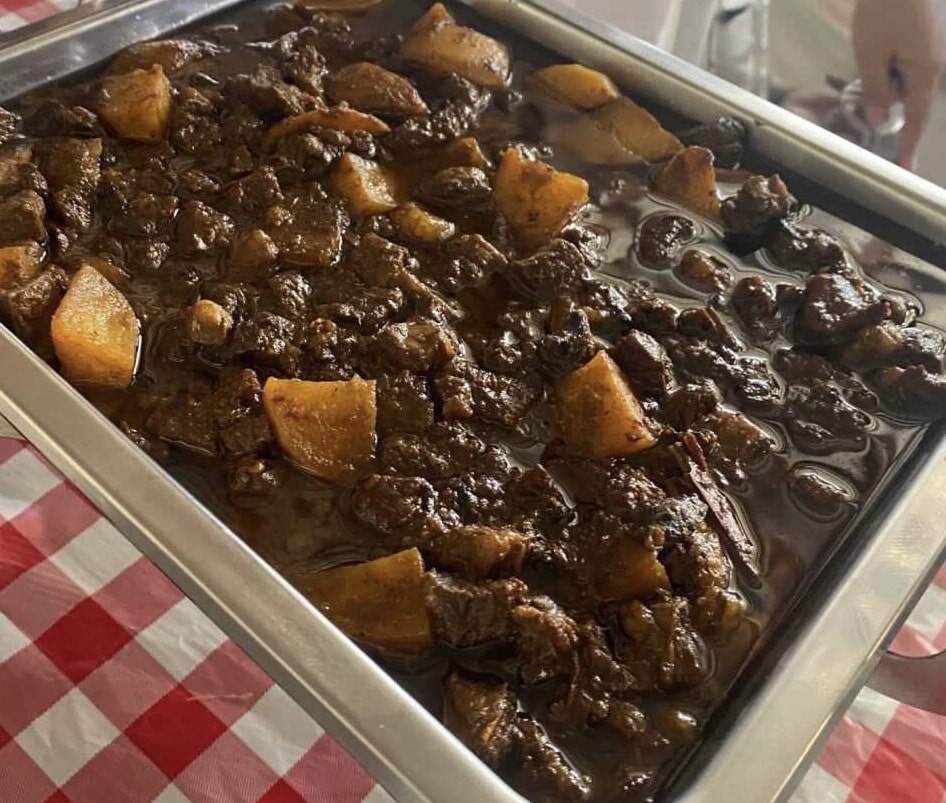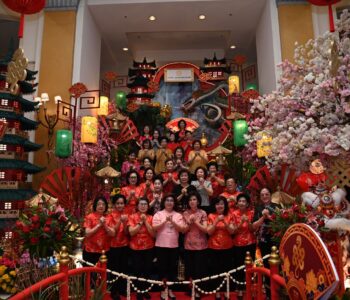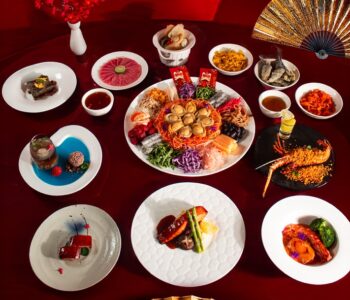
Jakarta is widely known as a multi-ethnic city. Yet, not many people know that on the east of Tanjung Priok harbour lies a village inhabited by people of Portuguese descent who still preserve their culture and heritage. It is from this old village where keroncong music and gado-gado originated.
On my way to Rumah Tugu in Kampung Tugu, North Jakarta, a faint sound of the violin pierced through the roars of the container trucks of the Cilincing highway. As I arrived, the violin’s shrills were joined by the strums of the prounga and macina, little guitar-like instruments that add to keroncong’s distinct sound. A group of musicians were performing outside of Rumah Tugu, playing songs many Indonesians would recognise.
Arthur James Michiels greeted me with a big smile as his fingers deftly moved from string to string of the bass he held, finishing up the current song. He then invited me onto the terrace and let me enjoy the music while they were rehearsing. I took the time to look around the only surviving old house in Kampung Tugu, built in the 1770s. Unlike my previous stopovers in this house some years ago, the house was brighter with painted in light colours and it stood taller as well. Arthur said frequent flooding caused the house to almost collapse which forced it to be renovated in 2020, though still adhering to its original form.
The historic building remains the home for the Michiels family members, and has become a basecamp for keroncong musicians to practice. More than that though, it is a living museum. Arthur and other musicians at Rumah Tugu are part of Krontjong Toegoe, a group of keroncong musicians established by Arthur’s father, Arend Julinse Michiels in 1988.

Kampung Tugu or Tugu Village is the oldest region in Jakarta formed by the Mardijker people – descendants of Portuguese freedmen hailing from India, Africa, and Malay Peninsula.
Malacca was controlled by Portuguese troops between 1511-1641. Then, in 1648 the Dutch took control of Malacca and the Portuguese troops were made prisoners of war. They were brought to Batavia to become VOC labourers. In 1661, the Portuguese were asked to convert to Protestantism and were exempted from all taxes. They were eventually banished to Southeast Batavia. In the past, the Betawi people had difficulty pronouncing the name Portuguese, so they called it Tugu. So the area where the Portuguese were exiled was called Kampung Tugu and has stood to this very day.
“Those who were captured by the Dutch were then brought to Batavia and made slaves. They were freed on the condition that they had to change their Catholic names to Protestant and changed their Portuguese names to adopted Dutch names. So they were re-baptised as Protestants. Michiels is a Dutch family name. The Dutch tried to remove the Portugueseness of the Tugu people, despite the fact that many were not pure Portuguese people by blood. Many were mixed race – Indian, Malaccan – and were thus referred to as the black Portuguese,” Arthur explained to me between rehearsals.

Michiels is one of the remaining six Portuguese descendant family names in Kampung Tugu alongside Andreas, Abraham, Quiko, Cornelis, and Browne. To this day, visitors can still find descendants of Portuguese people who use that surname and can interact as well as discover their culture, such as keroncong music, Rabo-Rabo, and Mande-Mande traditions.
“Keroncong was originally born in Kampung Tugu. If someone says that keroncong is Portuguese I will refute it, because in Portugal itself there is no keroncong music. Perhaps it was first played by people of Portuguese nationality and descent with musical instruments brought from Europe. But the way it was played was different. Keroncong music has been played since our ancestors were here, they brought musical instruments such as guitar, violin, and cavaquinho that were played to unwind and entertain themselves after their work. This is how keroncong music developed in Indonesia,” shares Andre Juan Michiels, Arthur’s oldest brother.
To directly enjoy the keroncong music from the Tuguese musicians in their home region visitors can attend the Rabo-rabo and Mande-mande cultural activities. Based on my experience in 2018, I had the opportunity to witness how the people of Portuguese descent in Kampung Tugu rejoice in their musical traditions.
Both Rabo-Rabo and Mande-Mande are a series of traditions to welcome the new year. The Rabo-Rabo tradition is held every 1 January, a New Year’s party that involves visiting the homes of Tuguese accompanied by keroncong music. The host will receive the group while serving new year’s dishes and then sing and sway together to the rhythm of keroncong. After rejoicing together, the host will join the group to visit other houses, until the group forms a large group extending like a tail.
While the Mande-Mande tradition is carried out every first Sunday in January. This activity is very unique because it is carried out by smearing powder on each other’s faces, which means that the person’s mistakes have been forgiven and vice versa. The essence of this celebration is to forgive each other so that entering the new year there are no more unforgiven deeds in the heart. They start the new year with joy in their hearts and a clean mind so that what they do throughout the new year will receive abundant blessings from God.



On that occasion, you can also taste the speciality dishes only be found in Kampung Tugu, such as Gado-Gado Siram (vegetables salad pouring with peanut sauce), Sped (beef stew), Pindang Serani (fish soup), Kue Pisang Udang (rice flour, grated young papaya and prawns wrapped in banana leaves), Ketan Unti (sticky white rice with grated coconut and brown sugar on top), and Apem Kinca (a block-shaped rice flour dough doused with durian and brown sugar sauce).
“The people of Tugu are descendants of the Portuguese who were familiar with European food. In the past, when they wanted to make salads, it was difficult to find the exact ingredients. So, they improvised by using existing ingredients. Without mayonnaise, they replaced it with peanut sauce. After mixing all the ingredients, such as water spinach, chayote, tofu, potatoes, etc. they looked like ‘gado’ in Portuguese means food for livestock. Because they called it many times, they heard “gado…gado…gado…gado...” sparking the origin of gado-gado. But the gado-gado in Kampung Tugu is different, here the peanut sauce is given coconut milk and spices and then served poured over the vegetables. The toppings include eggs and boiled potatoes as well as emping.” said Arthur.
Not far from Rumah Tugu, there is still an old European-style building with a big bell on the side called Gereja Tugu. This Protestant church was completed in 1747 and inaugurated a year later. The interior and furniture of this church still show its authenticity which looks unpretentious and historical.

According to Andre, based on Governor Decree CB 11 Year 1970, Tugu Village is protected by the Museum and History Law. But at the same time, a road was built, which was previously only a path that could not be passed by vehicles. Then, investors came and bought land for them to park container trucks for activities at Tanjung Priok. Eventually, Kampung Tugu ended up like a truck garage surrounded by great piles of containers. The drainage of the rice fields was ignored and the Tugu people of Portuguese descent decreased.
“90 per cent of the land previously owned by the Tuguese has been sold off to migrants, only 10 per cent remains. The Tugu people themselves are like guests because there are many migrants. Now the Mardjiker people are pluralised because they have married into various tribes, races and religions. For us, blending is important and natural. We as indigenous people do not limit it. But for us, the legacy of our ancestors must survive because history must be cared for and preserved. Kampung Tugu has been made into a tourist village where we Portuguese descendants who are still left want to introduce our cultural wealth by making tour packages, so I ask the government, please curb the container trucks that roam on our roads. It is very dangerous for visitors.” said Andre as he fixed his macina.
Kampung Tugu is located on the north coast of Jakarta. It will be easy to reach the village from Cakung in east Jakarta and follow the road of Cakung-Cilincing until finding the main road of Tugu.
Those of you who want to enjoy the history of Kampung Tugu directly from the Tuguese, visit Rumah Tugu, and enjoy food while listening to keroncong music, please contact Lisa Michiels at +62813 3876 3747.






